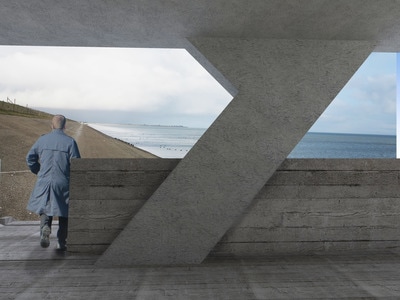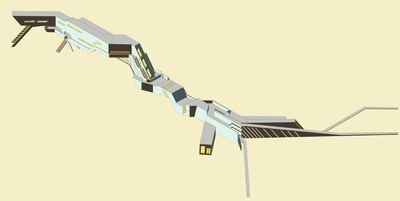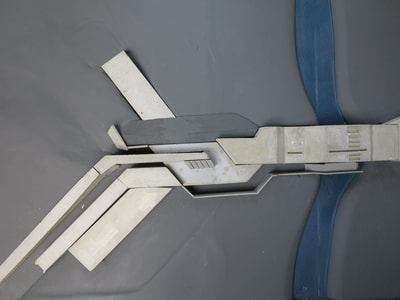Envisioning the AnthropoceneSpeculative scenario. 2015.
Envisioning the Anthropocene is a speculative scenario about an alternative relationship between plastic waste and coastal landscapes. The project was developed within the graduation studio Texel Metabolised, and was preceded by the Texel Flows: a metabolic atlas.
Technology was developed in the pursuit of transcending our limitations. It expanded human agency to the point where humanity has become a geologic force worthy of its own epoch. Welcome to the Anthropocene. Two signature markers of this epoch are the widespread presence of plastic and the rising sea levels, and both have the capacity to radically transform our habitat. Therefore it is ever more relevant to conceive of new ways of inhabiting, as opposed to abandoning. Acknowledging the Anthropocene exposes the inherent correlation between culture and nature at a territorial scale, where a community exacts agency over landscape, and vice versa. At that scale, the architectural instruments of agency is the typology of technical buildings. Those are indispensable, they render landscapes inhabitable, yet they are mostly placed in isolation, hidden away from the public domain. Texel is the Netherlands’ largest barrier island, and half of its territory is reclaimed – it is at or below sea level. Within this context, ‘Envisioning the Anthropocene’ elaborates a scenario about the technical buildings of the Anthropocene, i.e. the landscape machines. It devises a constructive role for plastic waste along Texel's coast, where the landscape machine is a catalyst of this metabolic exchange – essentially between consumers and the territory they inhabit, as either tourists or residents. Texel’s landscape machine is located on the edge between the existing and the future landscapes, this is where the territorial negotiation takes place. The old landscape provides the plastic waste, the shallows by Texel’s east coast provide the sand and silt. ‘Envisioning the Anthropocene’ treats the machine building as a cultural as well as a technical artifact. It is placed and designed in a way that is symbolic of its purpose, it is an extension of the public domain and in this way becomes the interpreter between the strictly specialized technical process and the society that benefits from it. The landscape machine functions not only within a geographical frame, but equally so in a temporal frame. When the metabolic exchange has reached to an end, its architecture, in its implicit longevity and immobility, will represent a technical process that is characteristic of its time of creation and will indicate both the vertical accumulation of sediment and the horizontal expansion of the territory. Thus, embodying a geologic gesture. |
|
In service of care communities in transformation.
Research + Design + Strategy |
Contact
+31 616 834 904 studio@kodimitrova.com Visiting Address Torenallee 22-04 5617BD, Eindhoven The Netherlands |














